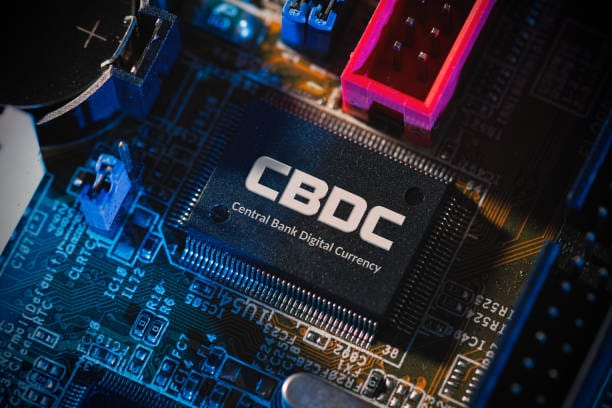Money has always been more than coins and paper. It is trust crystallized into something we can exchange. From shells and silver to banknotes and credit cards, each evolution of money has carried with it a shift in how we live, trade, and think about value. Now, we are standing at the edge of another profound transformation: the rise of Central Bank Digital Currency, or CBDC.
CBDC isn’t just another payment app, nor is it simply “digital cash” in the casual sense. It is money reimagined at the most fundamental level — issued directly by the central bank of a nation, backed by its authority, and existing purely in digital form. If this idea sounds abstract, it is worth remembering that all major changes in money have once been strange. People once mistrusted paper banknotes, doubting they could ever match the “realness” of gold. Yet within a century, paper became our normal. Now, we may be on the cusp of another such leap.
For you as an individual, this is not just a technical change. It’s about how you will be paid, how you will save, how you will buy your groceries, and how much privacy you may—or may not—retain in the process.
From Gold Coins to Digital Ledgers
To truly understand CBDCs, it helps to briefly revisit the journey of money. For most of human history, money was something physical — objects whose value was either intrinsic (like gold) or guaranteed by a trusted authority. The Industrial Revolution and the rise of central banking brought more abstract forms: banknotes, which were essentially promises to pay.
The 20th century saw another big abstraction: money stored in bank accounts, moved by checks, cards, and electronic transfers. Today, much of the money you “own” is already digital in a practical sense, represented as numbers in your bank’s database.
But here is the subtle difference: that digital money in your bank account is a liability of a private institution — your bank. If your bank fails, you could lose access to it, though deposit insurance offers some protection. CBDC, on the other hand, would be directly issued by the central bank — making it the most secure form of money a citizen can hold in a digital environment.
What Exactly Is a CBDC?
A Central Bank Digital Currency is a form of a country’s official currency, issued and regulated by its central bank, but existing only in digital form. Think of it as the digital cousin of physical cash. Just as you can hold a paper note from the central bank, you could hold its digital equivalent — perhaps on a smartphone wallet, a card, or even an offline device.
Unlike cryptocurrencies such as Bitcoin, CBDCs are not decentralized. They are fully under the control of the issuing central bank, which sets the rules for how they operate. Unlike the balances you hold in your commercial bank account, CBDCs are not intermediated by private banks — they represent a direct claim on the central bank itself.
Why Are Governments Interested in CBDCs?
Around the world, central banks are exploring CBDCs for a mix of reasons. In some countries, cash usage is declining rapidly, raising concerns about financial inclusion for people who do not use commercial banking services. In others, there is a strategic push to modernize payment systems, reduce costs, and improve efficiency.
Then there is the matter of competition. Cryptocurrencies and private digital payment systems like stablecoins are rising in popularity. A CBDC offers a state-backed alternative, potentially with the same convenience but greater stability and legal recognition.
For governments, a CBDC can also provide more direct tools for economic policy — such as distributing stimulus payments instantly, or managing interest-bearing digital wallets to influence saving and spending. But such capabilities also raise important questions about surveillance, control, and individual rights.
How CBDCs Could Change Daily Life
Imagine receiving your salary in CBDC. Instead of a bank transfer that may take days to clear, the payment arrives instantly in your official digital wallet, available for spending within seconds. You could pay your electricity bill with a tap, send money to a friend across the country instantly, or receive a tax refund without delays.
For people in rural areas or without traditional bank accounts, CBDCs could mean access to a safe, official form of money without needing a commercial bank. This could be revolutionary for financial inclusion — much as mobile banking was in parts of Africa.
But the changes could go beyond convenience. Depending on the design, CBDCs might allow programmable features: for instance, stimulus money that expires if not spent within a certain timeframe, or welfare payments that can only be used for approved goods. Such capabilities could make economic policy more targeted — but also more intrusive.
Privacy and Trust: The Big Questions
If cash is loved for one thing, it is anonymity. A CBDC changes that. While central banks generally say they will respect privacy, the reality is that digital money always leaves a trail. Even if user identities are encrypted, transaction data will exist somewhere.
This brings us to one of the most delicate balancing acts in CBDC design: ensuring enough privacy for individual freedom, while maintaining the ability to track and prevent illegal activities such as money laundering. Some proposals envision a “tiered” privacy model — where small transactions remain anonymous, but larger ones are reportable.
Ultimately, trust will be everything. People will only adopt a CBDC widely if they believe it won’t be used to monitor their every purchase or to restrict lawful behavior.
CBDCs and the Banking System
One of the central debates about CBDCs is their impact on commercial banks. If people can hold central bank money directly, might they move large amounts out of private bank accounts — especially during financial crises? This could destabilize the banking sector, as banks rely on deposits to fund loans.
To avoid such risks, some CBDC designs impose limits on how much a person can hold, or make CBDC wallets non-interest-bearing so that they are less attractive as a place to park large sums. Still, the shift could alter the relationship between citizens, banks, and the state in profound ways.
Global Momentum and Different Models
Countries are approaching CBDCs in diverse ways. The Bahamas has already launched the Sand Dollar, a national digital currency designed to improve access for its scattered islands. China is piloting the e-CNY, aiming for a system that works seamlessly alongside existing payment platforms. The European Central Bank is studying the digital euro, while the U.S. Federal Reserve is cautiously exploring its options.
There are also design choices about technology. Some CBDCs might use blockchain-like systems, while others rely on more traditional centralized databases. Some might be “account-based,” requiring identification and login, while others are “token-based,” functioning more like digital cash. Each model carries trade-offs in speed, scalability, and privacy.
Economic Policy in the CBDC Era
CBDCs open new possibilities for economic management. A central bank could distribute emergency relief instantly during a crisis. It could impose negative interest rates directly on digital balances to encourage spending. It could deliver targeted subsidies or taxes in real time.
These capabilities could make economies more responsive — but they also give central banks a degree of power unprecedented in modern history. The risk is that monetary policy might become too fine-grained, crossing into areas traditionally left to democratic debate and fiscal policy.
The Human Side of the Change
For all the macroeconomic and technological considerations, the adoption of a CBDC is also a human story. It will require public trust, cultural adaptation, and clear communication. People will need to understand how to use it, why it is safe, and what rights they retain.
For older generations, the shift away from physical cash could be unsettling. For younger people accustomed to digital wallets, the change might feel natural. Businesses will need to adapt their systems. Governments will need to provide education, support, and safeguards.
The Potential Risks
The introduction of CBDCs is not without hazards. Cybersecurity will be paramount — a successful attack on a CBDC system could undermine faith in the entire financial system. Privacy concerns could erode public acceptance. Poorly designed systems could exclude vulnerable populations instead of including them.
There is also the geopolitical dimension. If one country’s CBDC becomes widely used internationally, it could shift the balance of global finance. Some analysts see CBDCs as a potential tool in currency competition, perhaps even challenging the dominance of the U.S. dollar in global trade.
Looking Ahead: A New Relationship with Money
The road to a CBDC is not a single leap but a gradual transition. Pilots and experiments will test technologies, user experiences, and public reactions. The outcome will depend not only on central banks, but on how citizens respond.
One day, you might carry a digital wallet issued by your central bank alongside your debit card and payment apps. You might not even notice when CBDCs become part of the background of daily life — just as credit cards once seemed novel and now feel ordinary.
But make no mistake: this is not just another payment method. It is a redefinition of money’s very architecture.
The Personal Meaning of CBDCs
So what does all this mean for you? On one level, it means faster, cheaper, and more secure transactions. On another, it means rethinking how you store, move, and interact with money. It could mean greater inclusion for the unbanked, or greater control by the state over economic flows.
The story of CBDCs is ultimately the story of our evolving relationship with trust, technology, and each other. If designed well, they could make economies fairer and more resilient. If mishandled, they could weaken privacy and concentrate power.
As with every major shift in money, the technology is only part of the tale. The rest depends on human choices — and on whether we see money not only as a tool for trade, but as a shared foundation of freedom.






